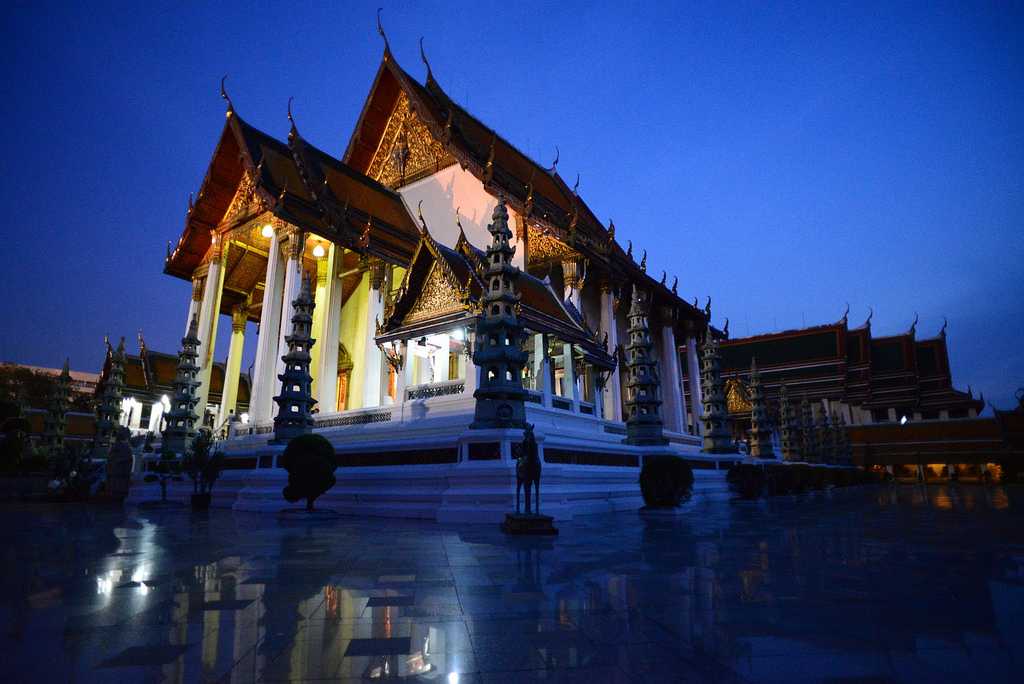Wat Suthat
Tags : Buddhist Temple
Timings : 8:30 AM - 9:00 PM
Entry Fee : THB 20
Wat Suthat, Bangkok Overview
One of the oldest temples of Bangkok, Wat Suthat greets you with its serene aura. The main highlight is an eight-meter-high bronze statue of Phra Si Sakyamuni, which dates back to the Sukhothai period and is the largest surviving bronze cast of Thailand belonging to the 14th century. In front of Wat Suthat is a striking Giant Swing towering at the height of 21.15 meters, making for a remarkable sight even from a distance.
Contained at the base of the image are the ashes of King Rama VIII. The giant swing, which marks your entry to the temple, is a marvel to behold. Featuring impressive architecture, Wat Suthat is adorned with some fascinating paintings and intricate murals. Wat Suthat also holds the highest royal temple rank, adding to its significance. Temple is also a venue for important ceremonies, such as the Royal Ploughing Ceremony held in May, thus playing a significant role in national religion. Although this place is not quite popular with tourists, one can enjoy an environment of tranquillity and peace. Overflowing with peace and tranquillity, Wat Suthat Thepphawararam is an excellent example of architecture and craftsmanship. Its construction began in 1782, under the reign of King Rama I, and it was completed in the 1820s, under the reign of King Rama III.
Wat Suthat Highlights
1. Giant Swing

Read More on Wat Suthat
Temple Architecture
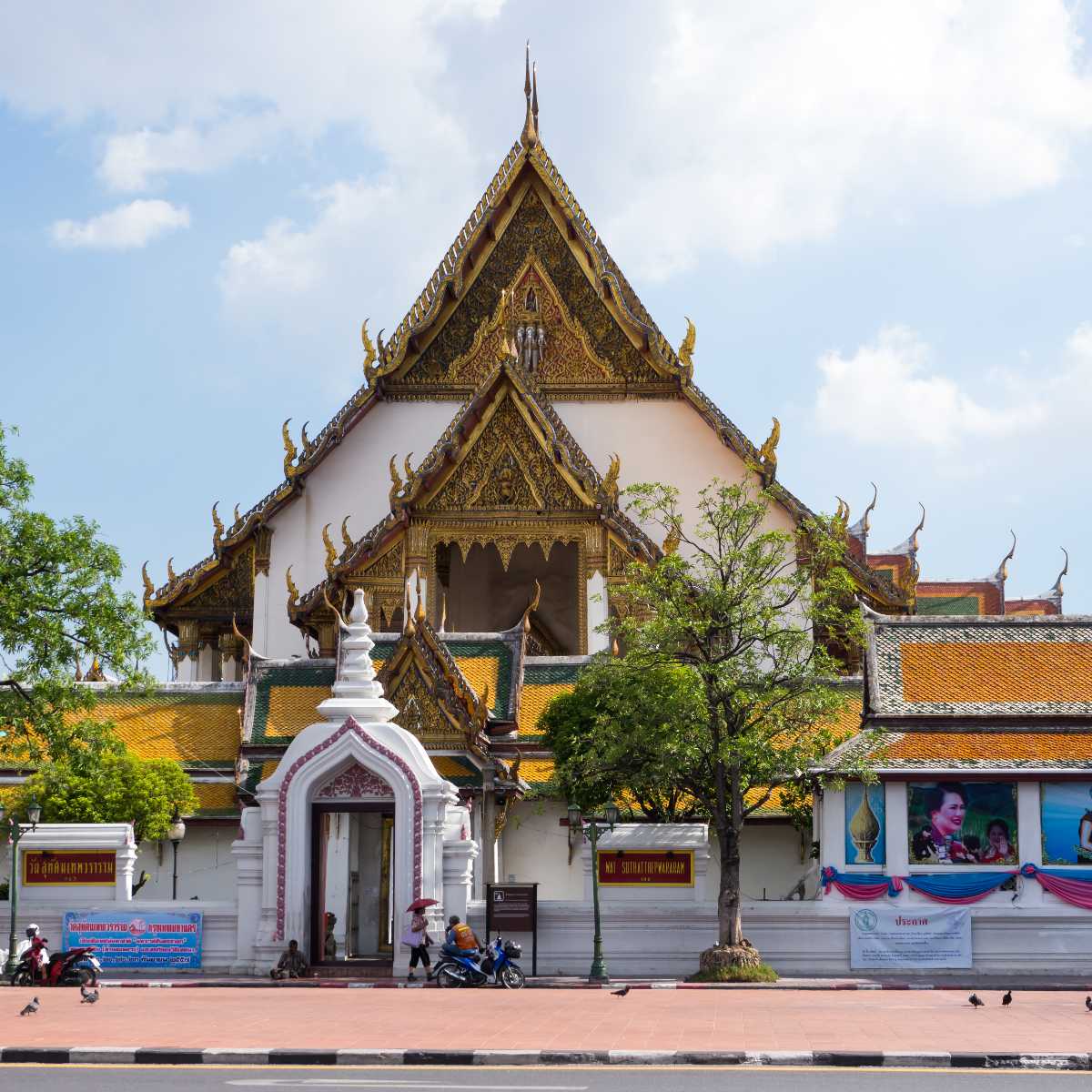
Wat Suthat Attractions
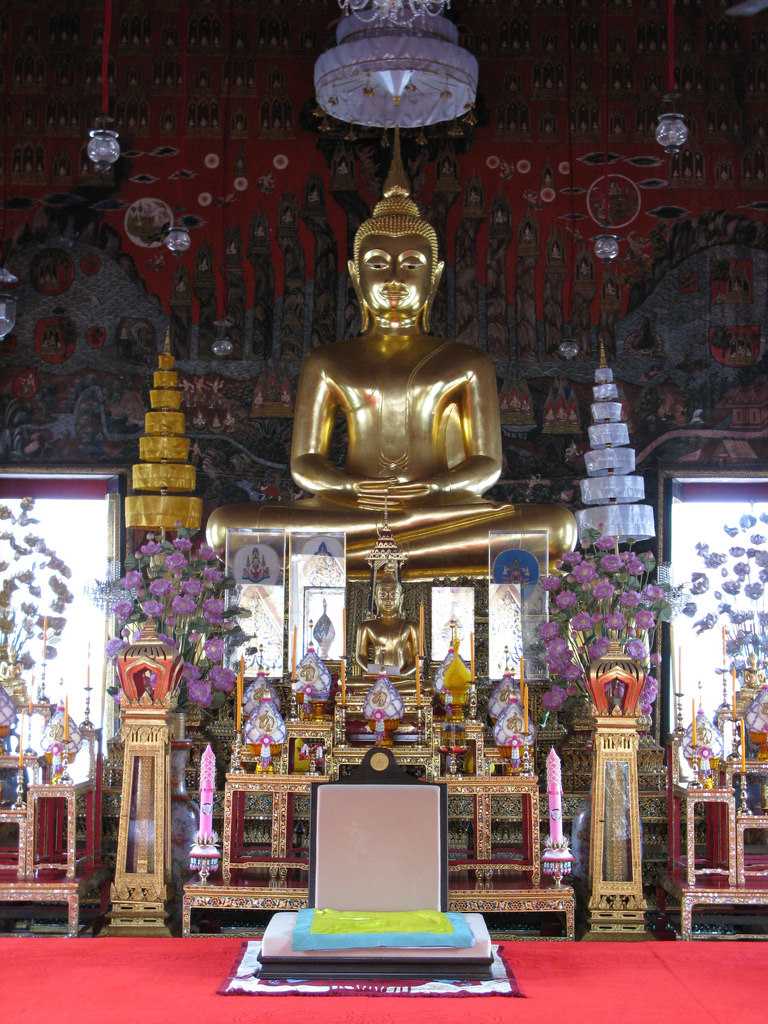
(Source)
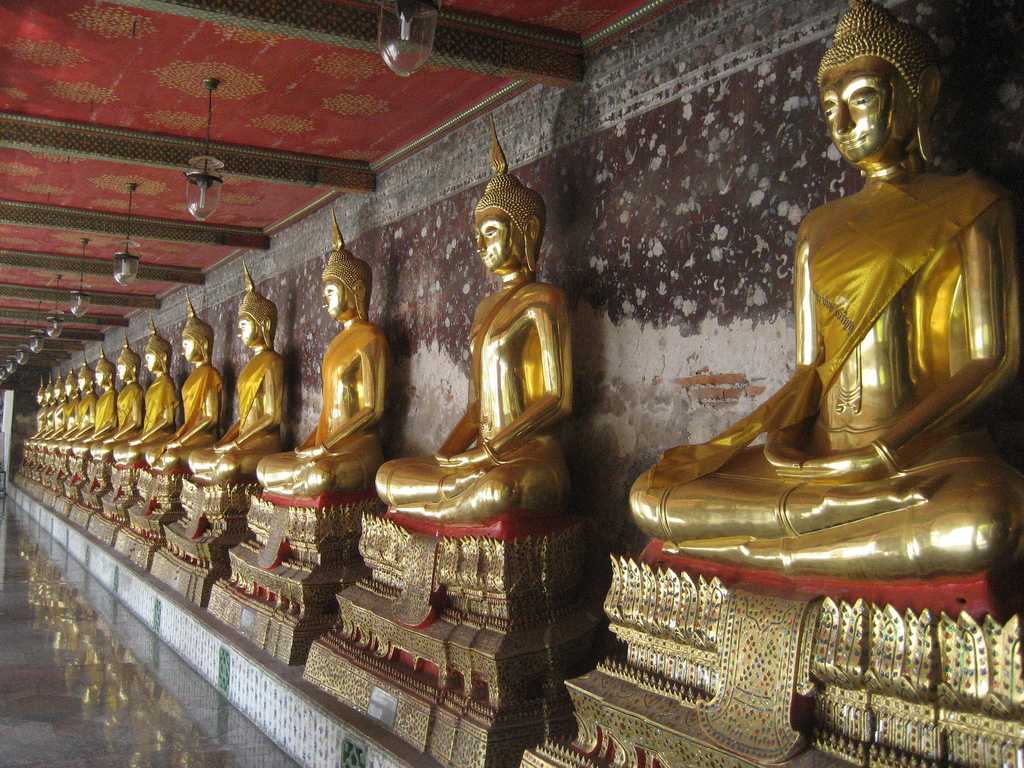
(Source)
The Sala Kan Parian is another hall where monks reside and teach Buddhist teachings.
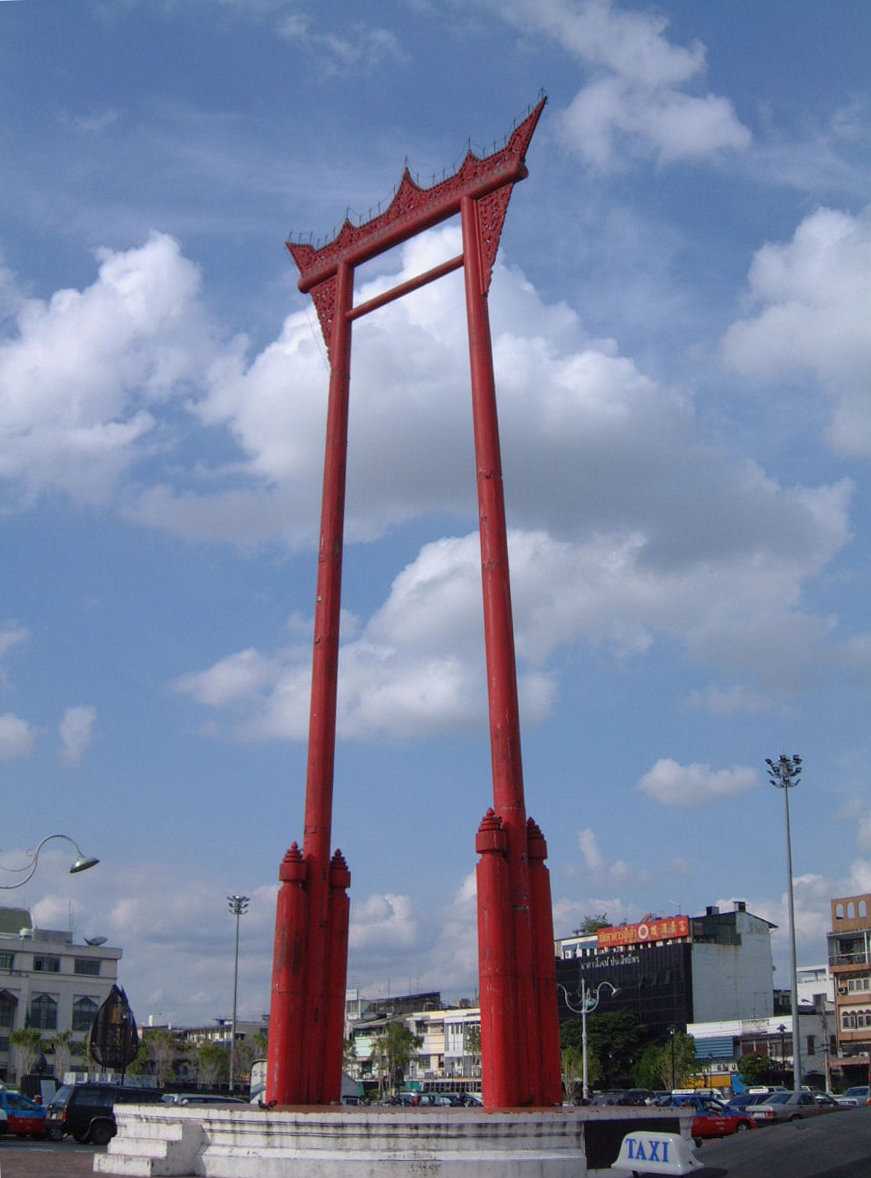
at the Entrance of Wat Suthat
(Source)
Significance of Wat Suthat
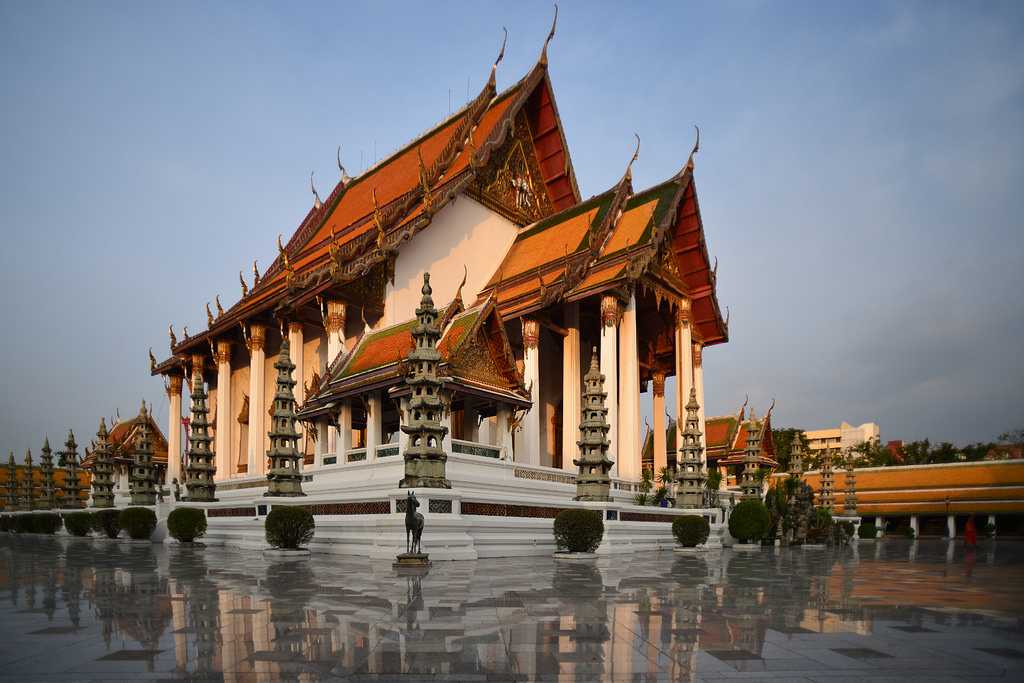
Tips
_20180926145024.jpg)
- Since Wat Suthat is a religious temple, it is advised to dress conservatively out of respect for the local people and monks. Sleeved shirt paired with a full-length pant would be the best thing to wear.
- Photography is allowed, so you can click as many pictures as you want in any part of the complex.
Wat Suthat History
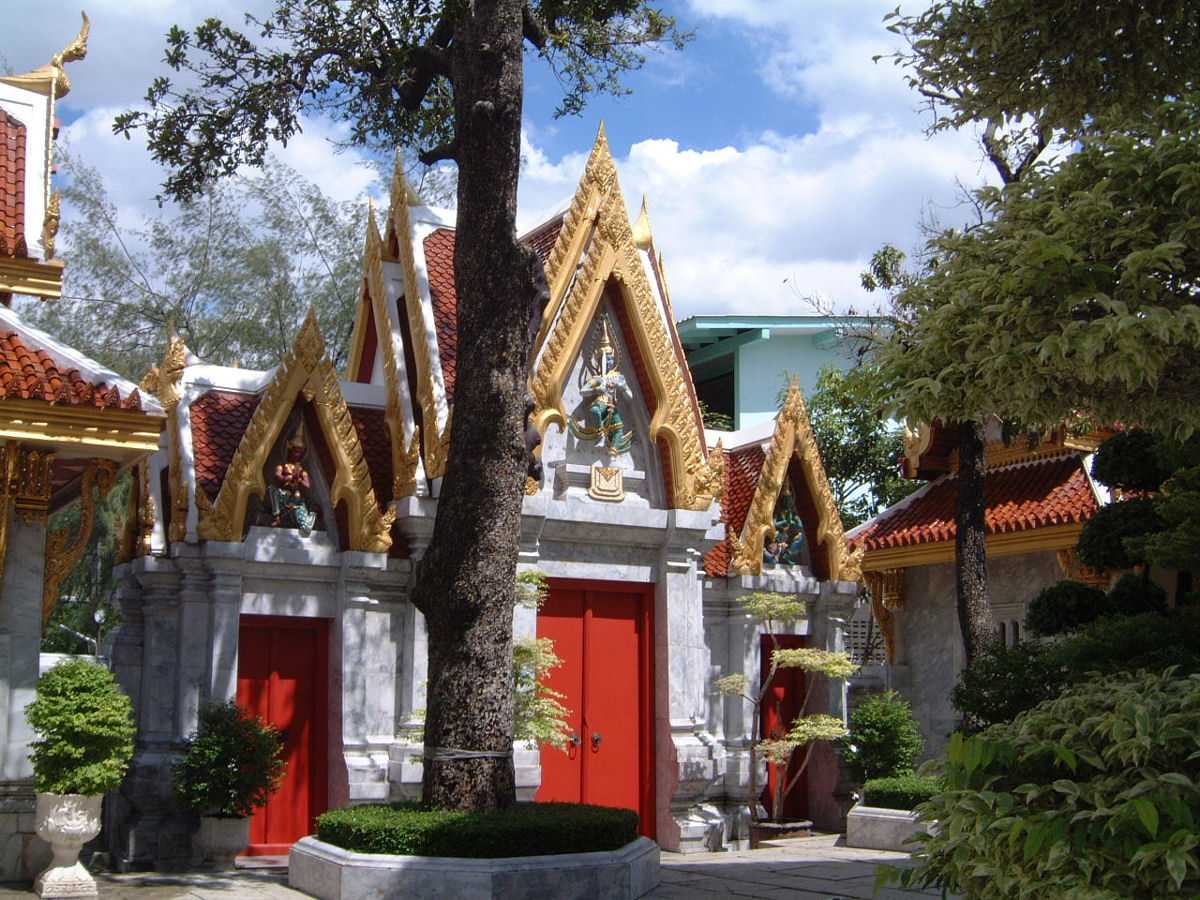
_20180926144309.jpg)
(Source)
How To Reach Wat Suthat
